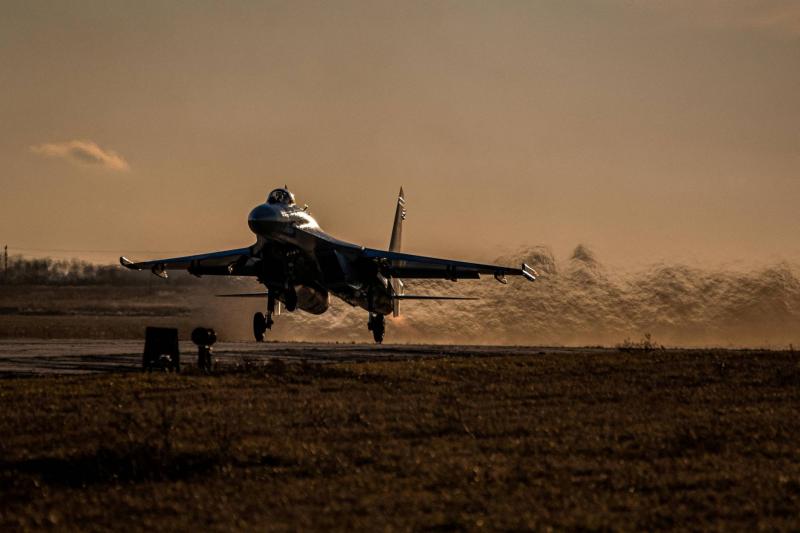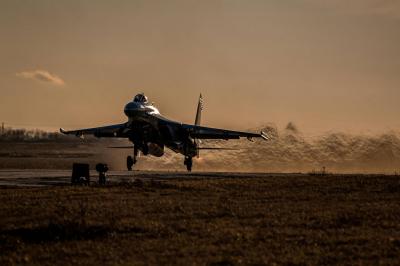The U.S. Department of Defense (Pentagon) announced that the U.S. military carried out several airstrikes on Thursday evening in Syria targeting groups allied with Iran, which the United States accuses of carrying out a drone attack that resulted in the death of an American contractor and injuries to five American service members. Later, a security source revealed to Reuters that the attack targeted a U.S. base in the al-Omar oil field in northeastern Syria.
The department announced both the attack on American soldiers and the response to the attack late Thursday evening. It added that the attack on U.S. forces targeted a coalition base led by the United States near Hasakah in northeastern Syria at around 1:38 PM (10:38 GMT) on Thursday.
The military stated that U.S. intelligence assessed that the attacking drone was of Iranian origin, which could further escalate the already strained relations between Washington and Tehran. John Kirby, spokesperson for the White House National Security Council, stated on Friday that the U.S. airstrikes in Syria are aimed at protecting U.S. troops there, as both ISIS and Iran-backed armed groups continue to pose a threat. Kirby, in an interview with CNN, asserted that the U.S. is not seeking conflict with Iran and that Tehran should not support attacks on U.S. facilities. Kirby confirmed that there were no casualties among U.S. troops.
It is worth noting that U.S. forces in Syria have previously been targeted by drone attacks, and casualties in such attacks have been extremely rare. U.S. Secretary of Defense Lloyd Austin mentioned that the strikes were executed under the direction of President Joe Biden and targeted facilities used by groups allied with the Iranian Revolutionary Guard Corps. He stated, "The strikes were in response to the attack today as well as a series of recent attacks on coalition forces in Syria carried out by groups allied with the Iranian Revolutionary Guard Corps." He added, "No group is immune from accountability for attacking our forces."
The Syrian Observatory for Human Rights reported that the U.S. strikes resulted in the deaths of eight Iran-aligned militants in Syria. Reuters could not independently verify this number.
The military indicated that the drone attack resulted in injuries to three soldiers and a contractor, necessitating their transfer to Iraq for treatment, where U.S.-led coalition medical facilities are located for combating remnants of ISIS. The U.S. Department of Defense stated that the other injured individuals were treated at the base in northwestern Syria.
General Eric Kurilla, commander of Central Command overseeing U.S. forces in the Middle East, reported that U.S. forces have been attacked by Iran-backed groups approximately 78 times since the beginning of 2021. U.S. forces in Iraq, where Iran also has influence, have faced drone and missile attacks in recent years. During a briefing to the U.S. House Armed Services Committee on Thursday, Kurilla warned about the danger of Iran's drone fleet, stating, "The Iranian regime now has the largest and most capable drone force in the region."
Three drones targeted a U.S. base in the Syrian Tanf region in January, with the U.S. military stating that it shot down two drones, while the third struck the base, injuring two members of the Free Syrian Army. U.S. officials believe that the drone and missile attacks are orchestrated by Iran-backed armed groups, highlighting the complex geopolitical landscape in Syria, where President Bashar al-Assad relies on support from Iran and Russia, viewing U.S. forces as occupiers.
The attack occurred a few weeks after U.S. Joint Chiefs of Staff Chairman General Mark Milley visited northeastern Syria to assess the mission of U.S. forces against ISIS and the risks faced by American soldiers there. When asked by reporters accompanying him whether he believed that deploying around 900 U.S. troops in Syria was worth the risk, Milley linked the mission of U.S. forces in Syria to the security of the United States and its allies, stating, "If you think this is important, the answer is yes... I believe this is important."
The U.S. forces in Syria, which former President Donald Trump nearly withdrew in 2018 before later scaling back his withdrawal plans, remain part of a broader international war against terrorism that historically included the war in Afghanistan and a much larger deployment of U.S. forces in Iraq. Despite ISIS losing control of vast areas of Syria and Iraq that it had seized in 2014, sleeper cells continue to carry out hit-and-run attacks in barren regions that are not fully under the control of U.S.-led coalition forces or the Syrian army.
The Syrian Democratic Forces (SDF), primarily led by Kurds and a key ally of the United States in Syria, have detained thousands of ISIS militants. U.S. officials indicate that ISIS still possesses the capability to return and pose a significant threat.




